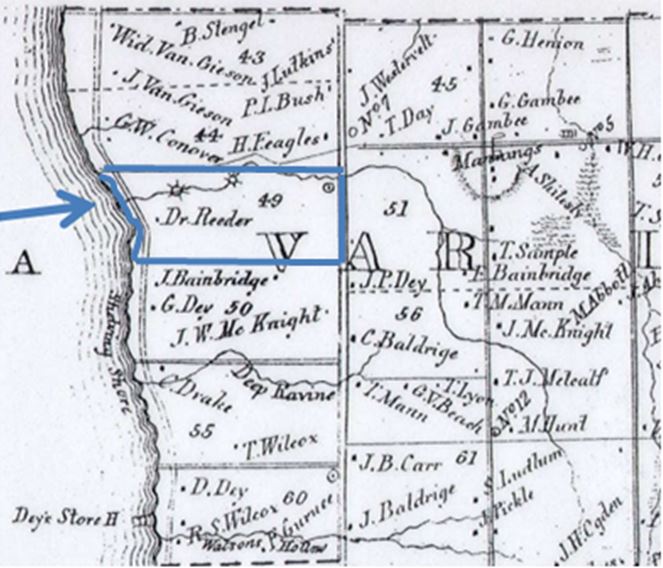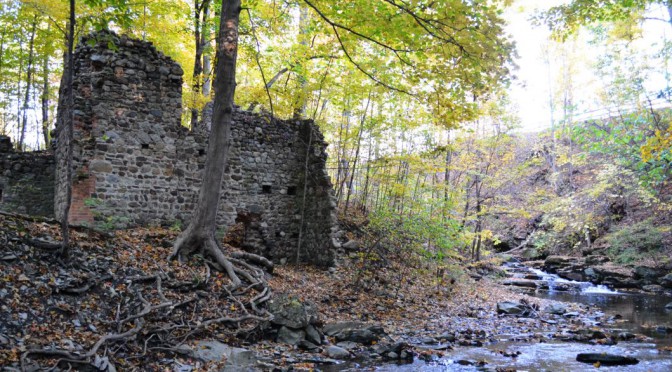Article was published in the February 2017 WCGMC Newsletter
Sometimes it is fun to just explore for fossils or minerals by visiting an unknown location, perhaps one with potentially appropriate geology, but not a site with documented fossils or minerals. One may not find much, but occasionally one stumbles onto something completely unexpected and equally interesting. In the fall of 2015 Stephen Mayer and I had such an experience when we decided to investigate the geology along Reeder Creek in Varick, NY.

Like the good geologists that we are, we set out along the creek slowly, our heads down observing rocks and working to identify the section we were traversing. It was encouraging that the Middle Devonian section was well exposed in the creek, but not particularly interesting from a fossil point of view. A few brachiopods, one gastropod, but no true fossil-rich bed was found. The only true find of the day was an Eldredgeops rana that popped out of what we believe was the Ledyard shale of the Ludlowville Formation. He (or she?) posed for a nice picture of both cast and mold, but was too broken for any hope of restoration.

However, as we progressed along the creek heading east from Seneca Lake, we stumbled upon an old foundation nearly at the creek’s edge. Piqued by such an isolated structure hidden several hundred meters from any apparent road or other structures I set out to learn what we had found. An online search immediately directed me to the resources of the Tompkins County Public Library and a gold mine of information (Seneca County Records, 1876).

Turns out, Benjamin Dey acquired Lot 49 on the east shore of Seneca Lake in 1791 and built the first frame house in the town of Romulus on the property 3 years later. Dey constructed a saw mill on the property in 1796 and then a grist mill along Reeder Creek in 1800. It was the foundation of this grist mill, built more than 200 years ago, that we had discovered on our geology investigation!


I had hoped to add to my collection of Pleurodicytum americanum colonial corals by finding the Pleurodicytum Bed near the contact of the Ledyard and Wanakah members of the Ludlowville Formation. However it may be that we did not progress far enough upstream in Reeder Creek to locate this horizon or perhaps it was hidden from us under the early fall foliage. Despite the lack of fossil finds along the quiet creek, Stephen and I did not go home empty handed. We had found, and then identified, a little bit of Finger Lake history.
Reeder Creek, like most creeks along the Finger Lakes, is on private property. Permission must be obtained even if the land is not openly posted.
References:
Luther, 1907, Geology Map of Seneca Lake, New York Museum Bulletin #128
Seneca County, 1876, History of Seneca County, Reprint – Tompkins County Public library online, p. 153-159. Link to site
